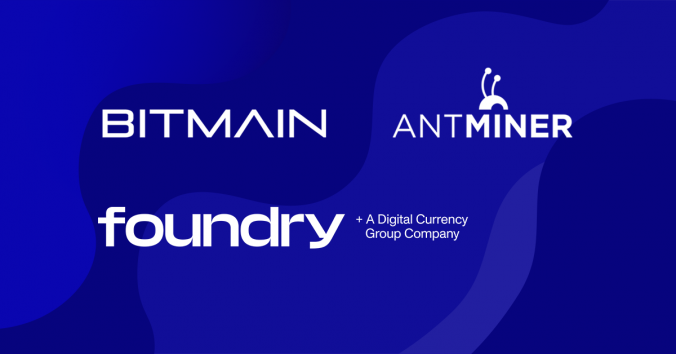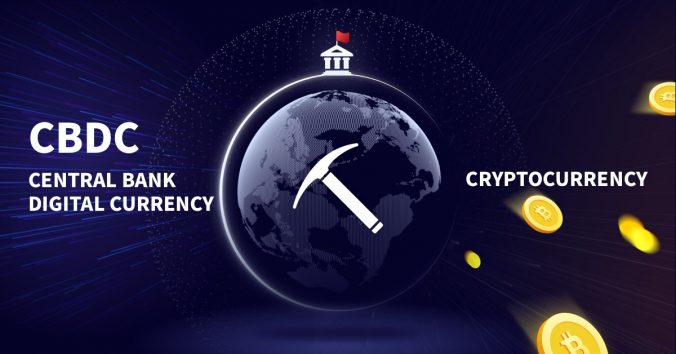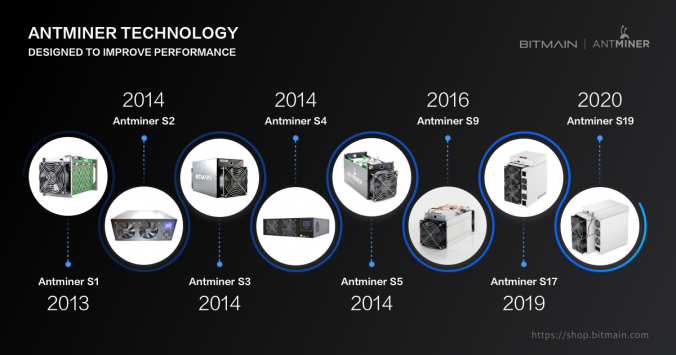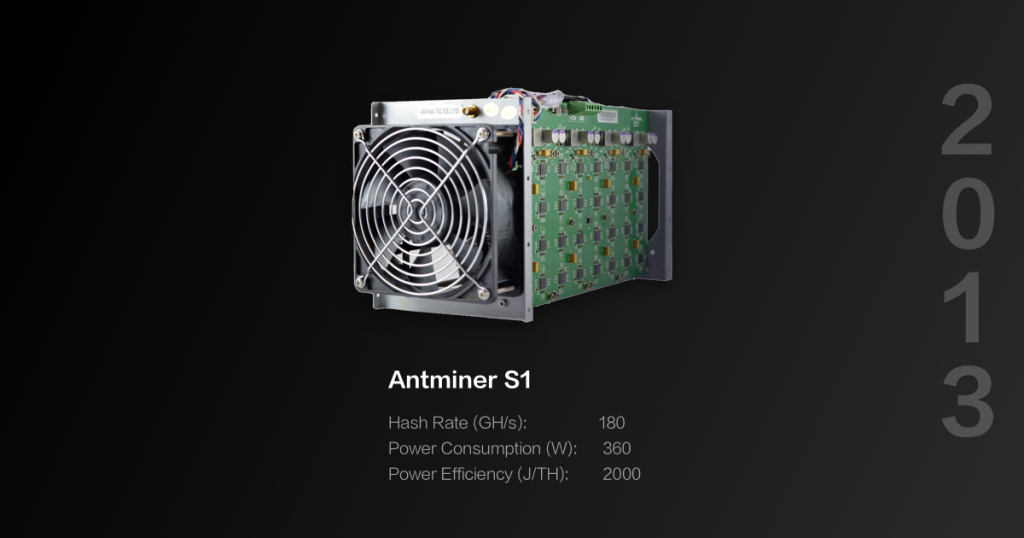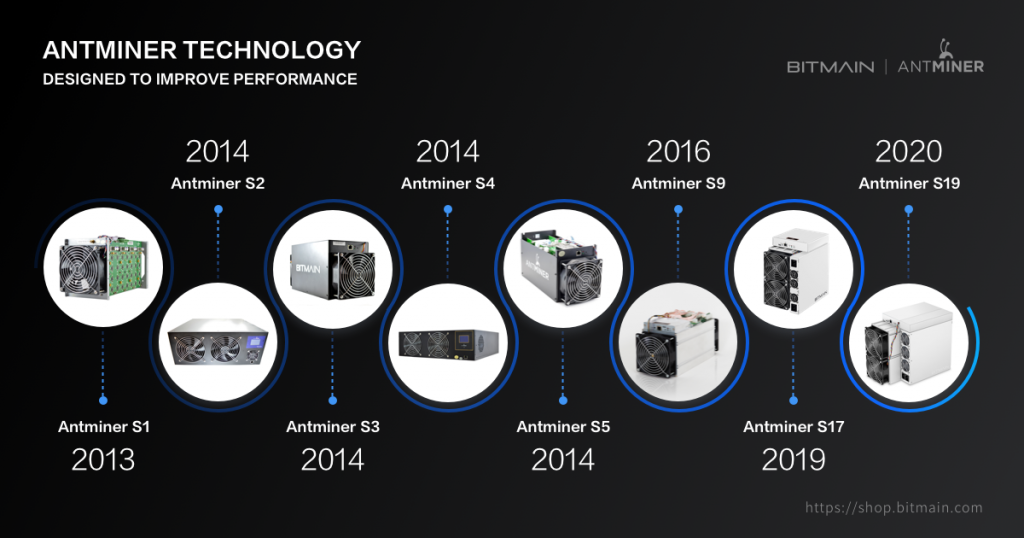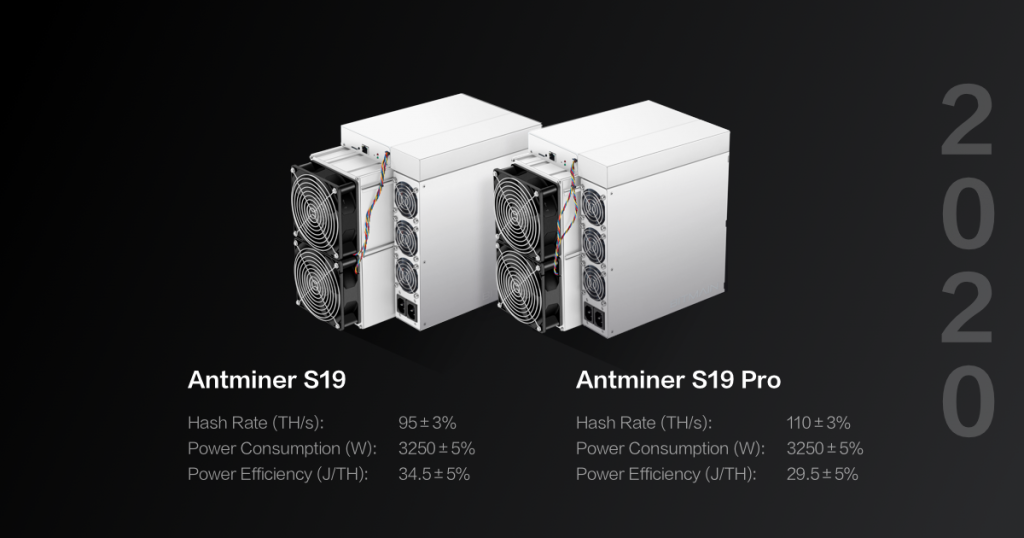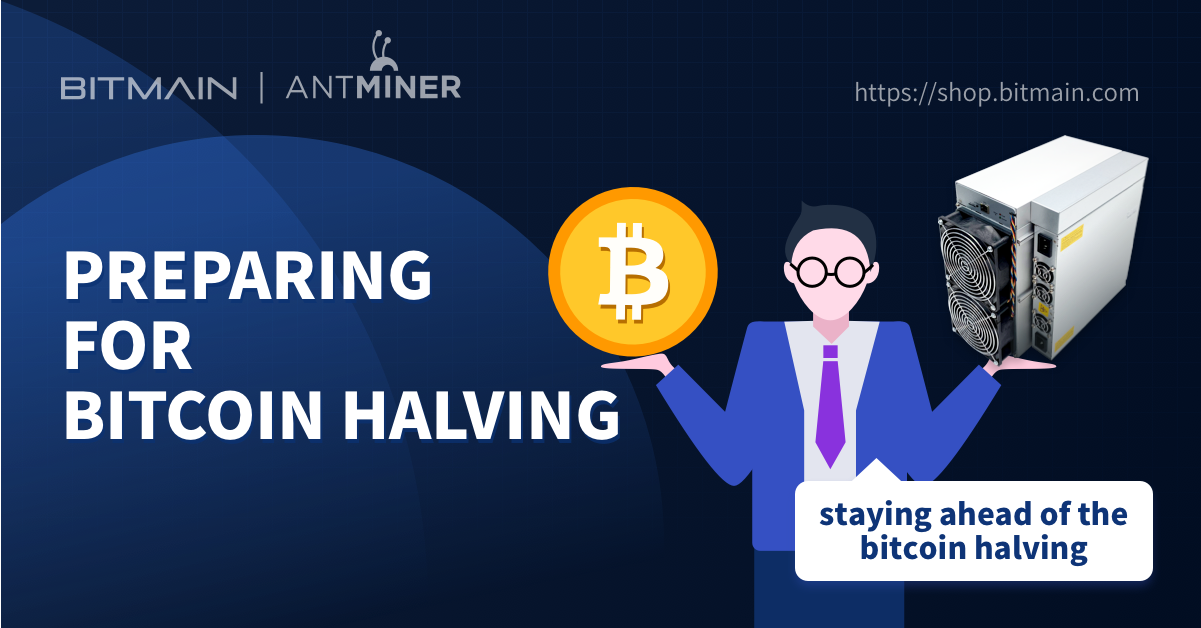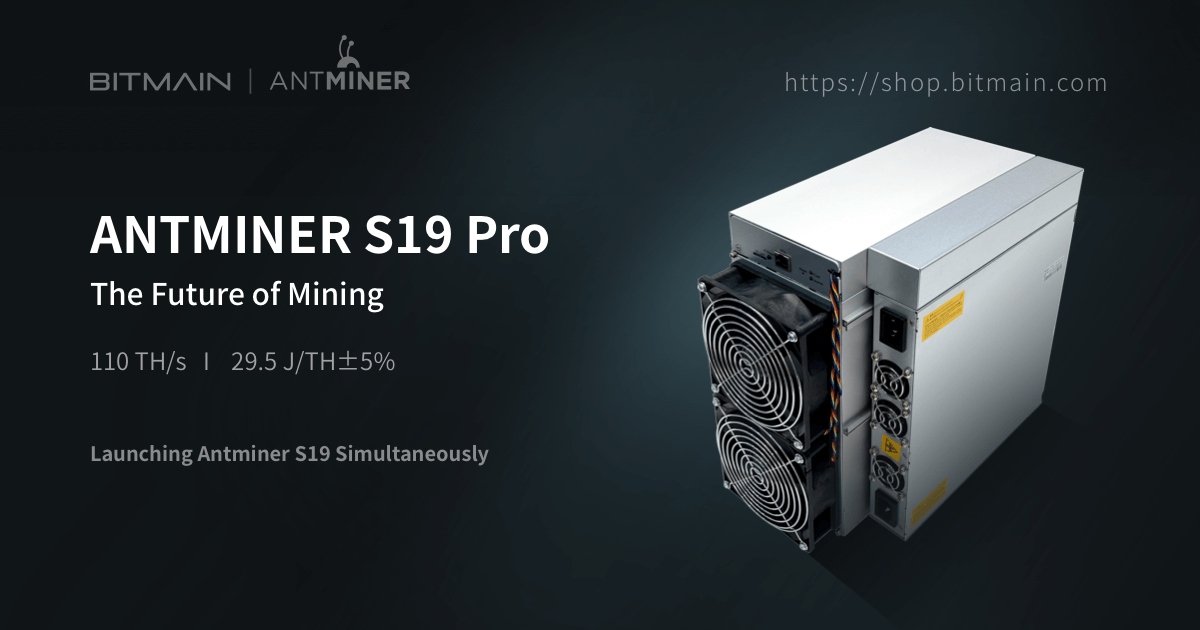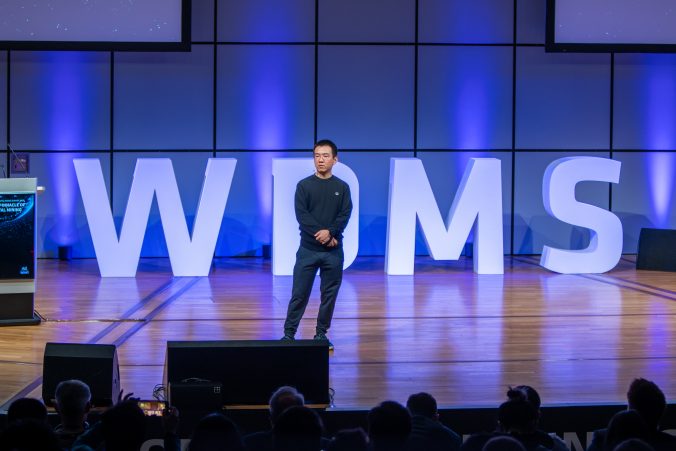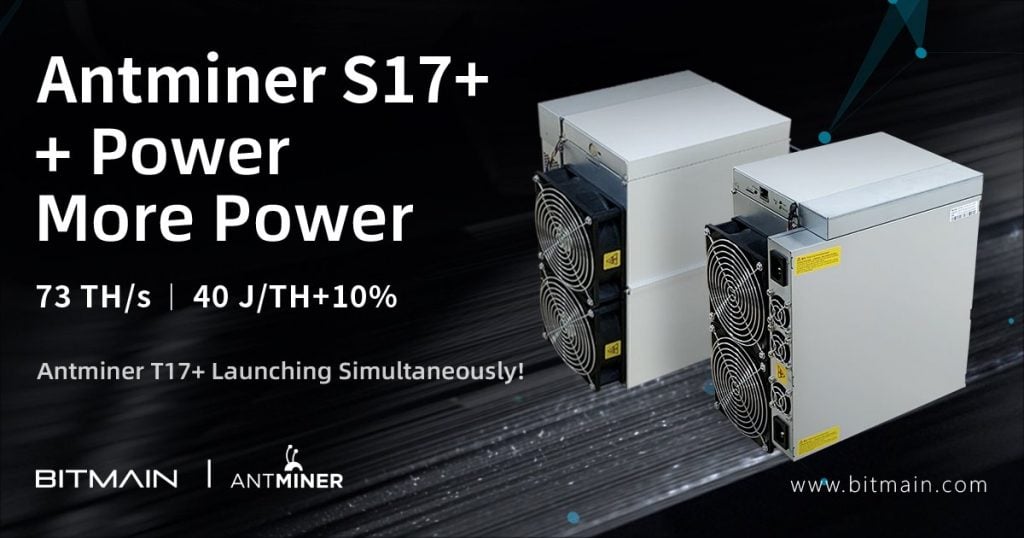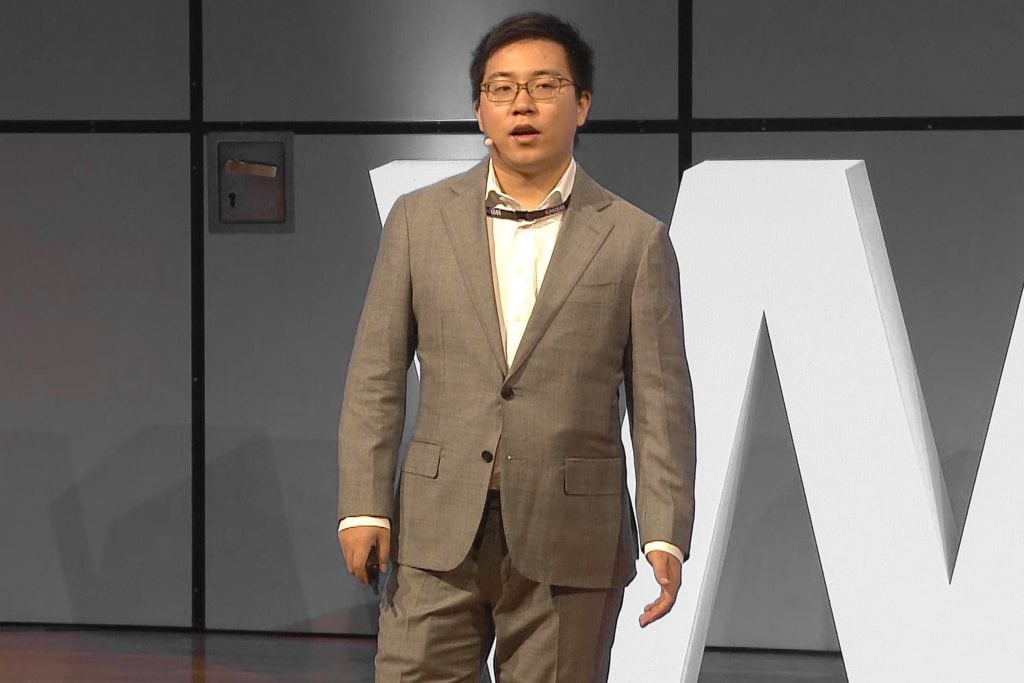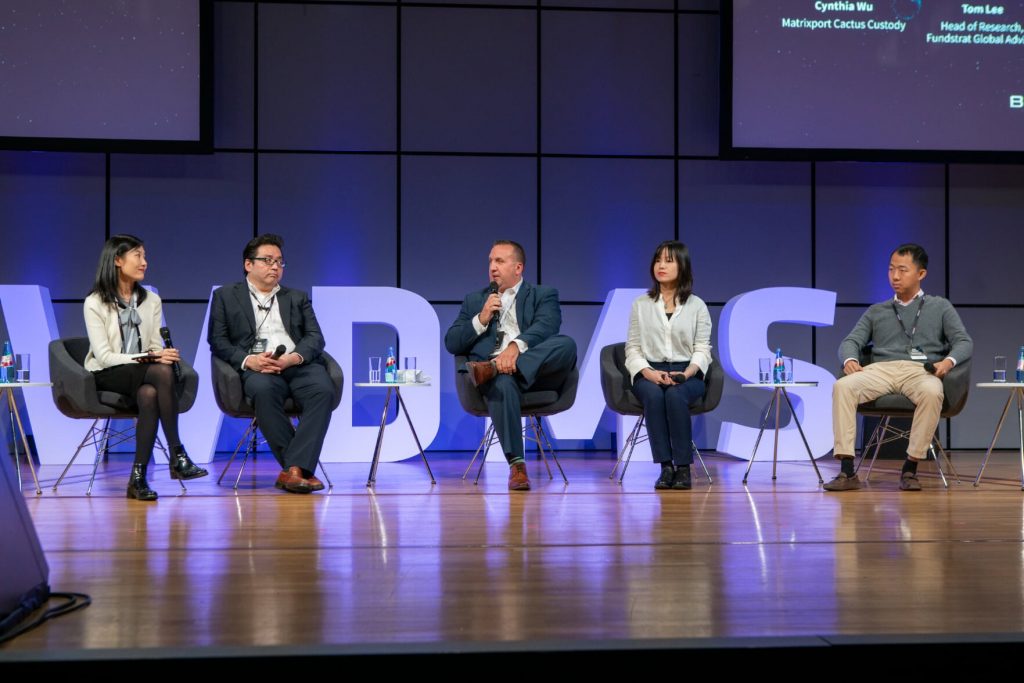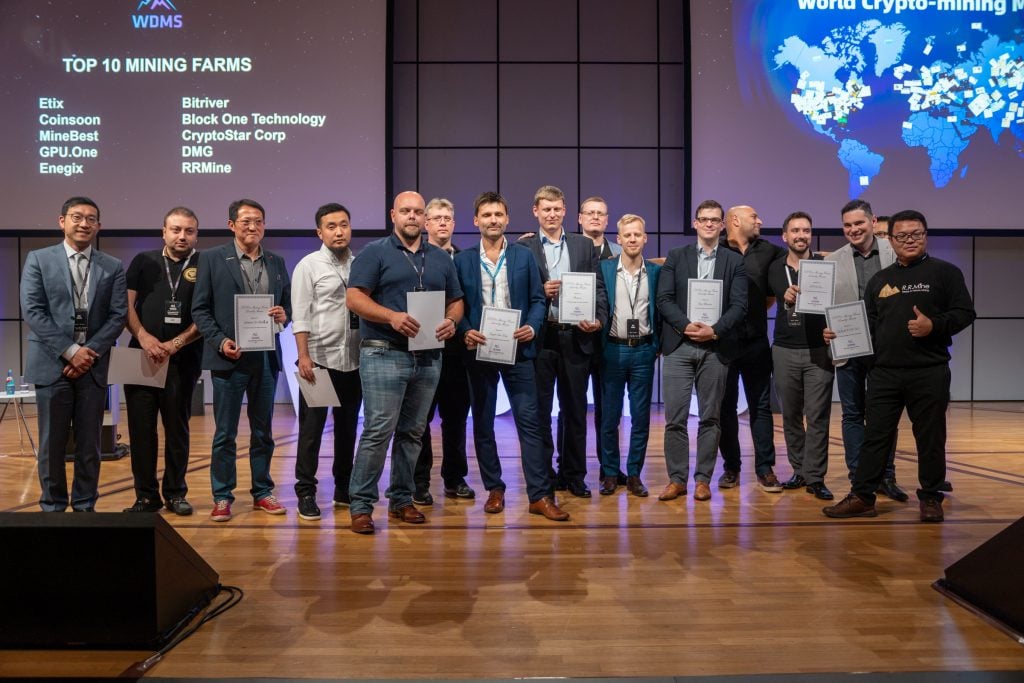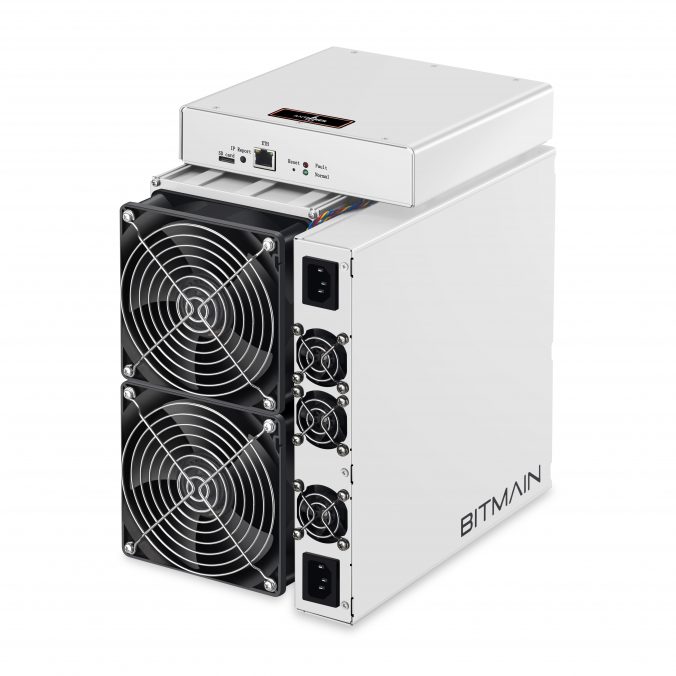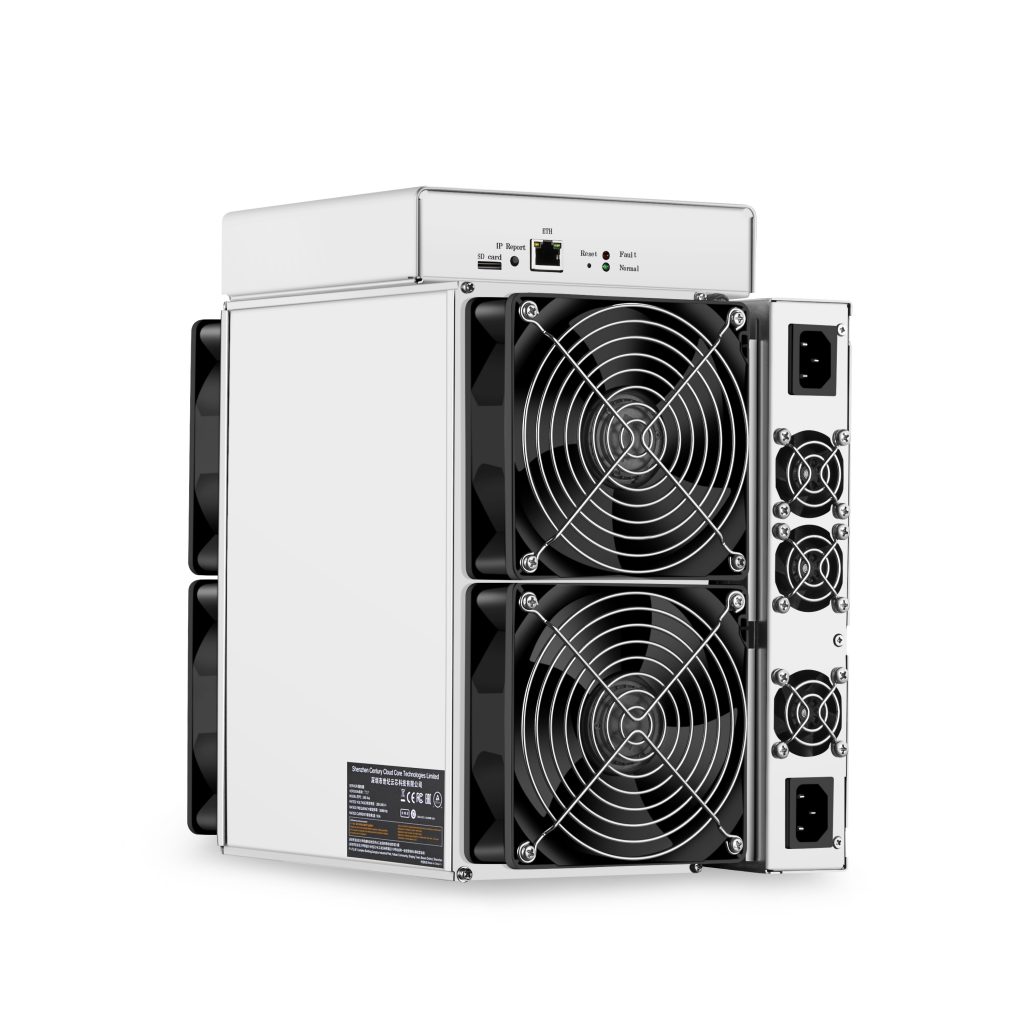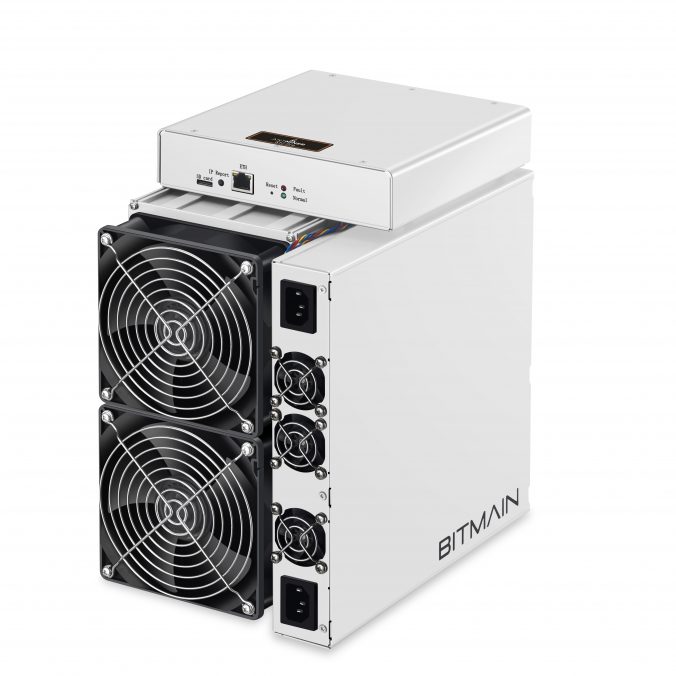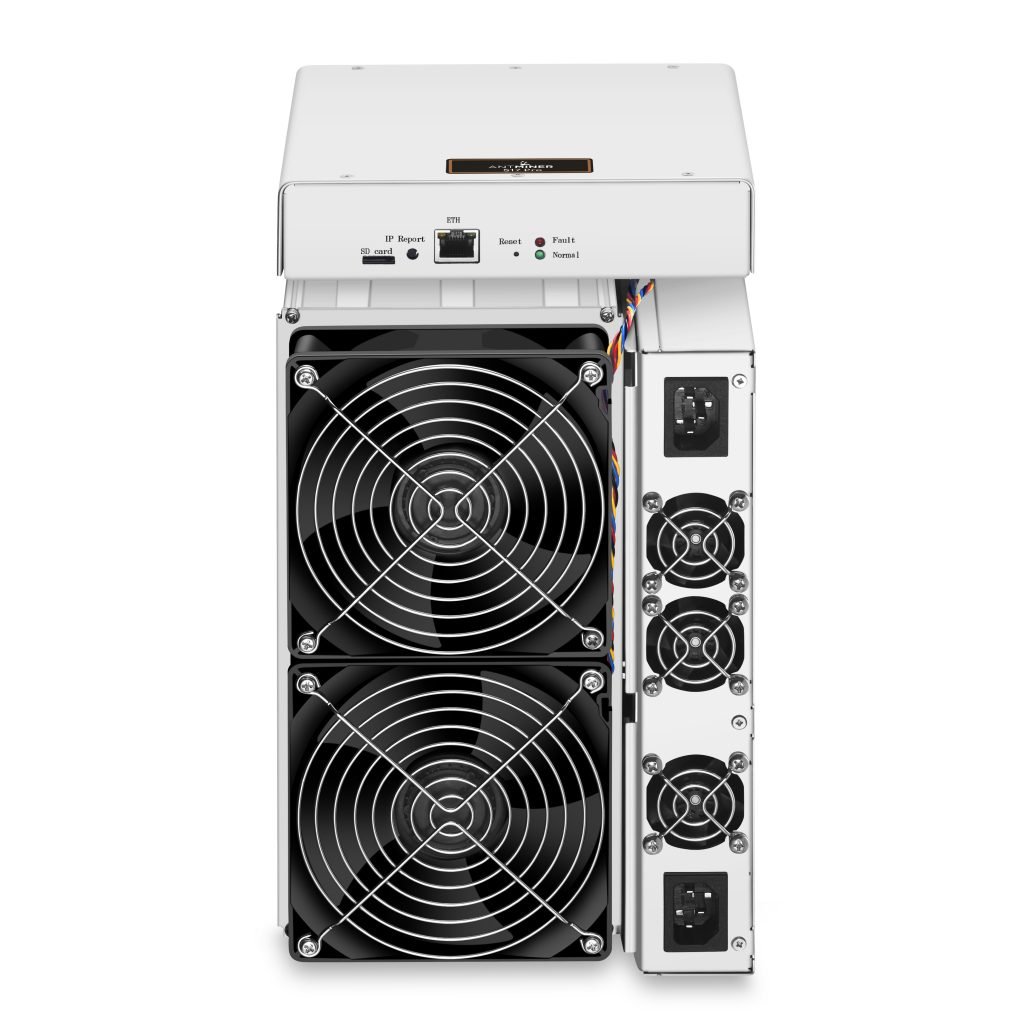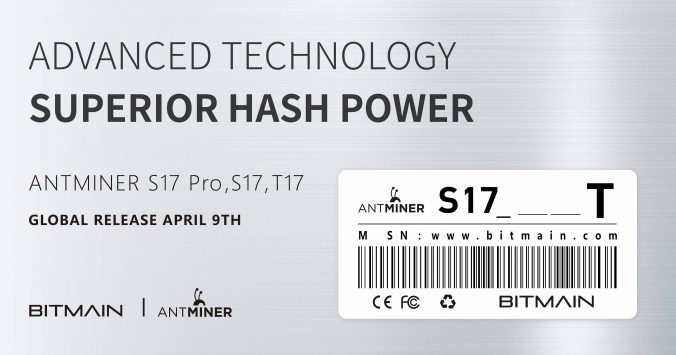(This is a translated version of Bitmain’s original blog post, which is in English)
Definitionen
UASF: User Aktivierte Softfork. Entwickler fügen einen verbindlichen Regelsatz hinzu, um die Node-Software zu ändern, was bestimmte Arten zuvor gültiger Blöcke nach einem Flagday ungültig macht. Diese Methode macht keine Mining-Mehrheit erforderlich, um einen Chain Split zu unterstützen oder zu aktivieren. Das UASF-Angebot hat zum Ziel, eine 51%-Attacke gegen die Blockchain vorzunehmen, die die Mehrheit der wirtschaftlichen Aktivität hat, und diese Attacke wird als „Wipe Out“ bezeichnet.
UAHF: User Aktivierte Hardfork. Entwickler fügen einen verbindlichen Regelsatz hinzu, um die Node-Software zu ändern. Diese Änderungen führen dazu, das zuvor ungültige Blöcke nach einem Flagday gültig werden, was nicht erforderlich macht, dass eine Mehrheit der Hash Power ausgeführt wird. Nodes mit den Regelsatzänderungen folgen dieser Chain, unabhängig von deren Hash-Rate. Das UAHF-Angebot ist ein friedlicher und freiwilliger Aufbruch verschiedener Community-Mitglieder, die verschiedene Meinungen und Visionen haben, und es zielt nicht darauf ab, andere Blockchains anzugreifen, selbst wenn die UAHF-Chain eine höhere Hash-Rate hat.
BIP148-Node: ein Bitcoin-Node, das die BIP148-Konsensregel-Änderungen implementiert hat.
BIP148-Chain: eine Blockchain, die laut der BIP148-Konsensregel-Änderungen gültig ist. BIP148 ist eine Art von UASF.
Original-Chain: Die Blockchain, die die gleichen Konsensregeln verwendet, die heute genutzt werden. (26. Mai 2017)
Wipe-Out: Falls die UASF-Chain aktiviert ist und die UASF-Chain die Mehrheits-Hash-Rate erhält, werden die Nodes, die der Original-Chain folgen, sich neu organisieren und damit anfangen, der UASF-Chain zu folgen. In einem solchen Fall wird eine deutliche Zahl der Aufzeichnungen zu finanziellen Transaktionen verschwinden. Dies ist ein Risiko, welches die UASF-Nodes jenen Nodes auferlegen, die der Original-Chain folgen. Im Gegensatz hierzu bedroht ein UAHF die Nodes, die einen anderen Regelsatz befolgen, nicht mit demselben Risiko.
Bit 1: Das BIP9-Versions-Bit in einem Block-Header, der als Signal für die SegWit-Aktivierung genutzt wird.
Stagnationsrisiko: Eine Blockchain ohne Mining-Support kann plötzlich damit aufhören, erweitert zu werden, da der wirtschaftliche Anreiz für Miner gering ist. Ein Minderheits-Fork wie UASF unterliegt einem ernsthaften Risiko permanenter Stagnation.
Hintergrund
Am 24. Mai 2017, traf eine bedeutende wirtschaftliche Mehrheit – mehr als 80% der gesamten Hashing-Power- und 80% der Transaktions-Source-Software – der Bitcoin-Branche eine Vereinbarung in New York (New York Vereinbarung) bezüglich konkreter Schritte, Bitcoin in der nahen Zukunft zu skalieren. Vertreter von Bitcoin Core lehnten die Einladung zu diesem Meeting ab. Diese Vereinbarung ist die harte Arbeit jener, die ehrlich an Bitcoin glauben sowie jener Unternehmer oder Investoren, die ein starkes finanzielles Interesse an der schnellen und gemeinsamen Skalierung von Bitcoin haben. Bitmain ist ein Unterstützer der Vereinbarung. Wir unterstützen die Vereinbarung und möchten, dass diese so schnell wie möglich durchgeführt wird.
Ein Software-Projekt, btc1, welches die New-York-Vereinbarung thematisiert, befand sich in aktiver Entwicklung und wird wahrscheinlich einen Konsensregel-Änderungsplan liefern, der SegWit2x genannt wird. Der testnet5 für SegWit2x ist bereits am Leben. Die Alpha-Version der Software wird am 16. Juni veröffentlicht, und alles ist noch immer pünktlich.
Folgen Sie dem github hier:
https://github.com/btc1
Lesen Sie eine Reddit-Diskussion darüber hier:
https://www.reddit.com/r/btc/comments/6h1wpr/segwit2x_a_summary/
Abonnieren Sie die Mailingliste:
https://lists.linuxfoundation.org/mailman/listinfo/bitcoin-ml
Trotz dieser Vereinbarung bekommt die UASF (BIP148) Astroturfing-Bewegung weiterhin viel Sendezeit auf zensierten Foren, von denen viele von einzelnen anonymen Individuen kontrolliert werden. Viele der Softwareentwickler, die an einem Softwareprojekt namens “Bitcoin Core” arbeiten, unterstützen dies auch. BIP148 stellt ein bedeutendes Risiko für das Bitcoin-Ökosystem dar. Daher bereiten wir einen Notfallplan vor, um die wirtschaftliche Aktivität auf der Bitcoin-Blockchain vor dieser Bedrohung zu schützen.
Die New-York-Vereinbarung wird auch kontinuierlich und vorsätzlich von einer Gruppe von Softwareentwicklern sabotiert, die an Bitcoin Core arbeiten.
Wir müssen außerdem auf das zerstörerische Risiko vorbereitet sein, das eine UASF-Aktivierung dem Bitcoin-Netzwerk bescheren wird. Die New-York-Vereinbarung ist sehr konservativ und zielt darauf ab, innerhalb der Bitcoin-Community bezüglich einer einfachen aber künstlich eskalierten Skalierungsproblematik Frieden zu schaffen. Falls die New-York-Vereinbarung einen Chain-Split irgendwie nicht verhindern kann, müssen wir vorbereitet sein.
Der Zweck dieses Blog-Posts besteht darin, unseren UAHF-Notfallplan für UASF/BIP148 anzukündigen.
Warum wir einen Notfallplan gegen BIP148 benötigen
Gemäß BIP148 gilt, dass wenn der Chain MTP bei oder nach Dienstag, den 1. August 2017 0:00 Uhr GMT (Epochenzeit 1501545600) liegt, die BIP148-Nodes damit anfangen, Bitcoin-Blocks verwaisen zu lassen, die Bit 1 an ihrem UASF-Forking-Point nicht signalisieren. Die Konsensregel-Änderung verkleinert den Regelsatz gegenüber der Original-Chain vor der BIP148-Aktivierung. BIP148-Nodes folgen der neuen BIP148-Chain, falls mehr als null Hashing-Power vorhanden ist, um es zu unterstützen. Falls die Hash-Rate, die die Chain unterstützt, 0 ist, werden BIP148-Nodes entdecken, dass ihre Chain nicht erweiterungsfähig ist.
Falls Hash-Power vorhanden ist, die die BIP148-Chain unterstützt, muss es sich nicht um eine Hash-Rate-Mehrheit handeln, um eine Erweiterung der Chain zu ermöglichen. Selbst wenn nur eine Person vorhanden ist, die Hashes per Hand löst, kann die BIP148-Chain durch einen weiteren Block erweitert werden, solange genügend Zeit vorhanden ist. Laut der bestehenden Hash-Rate-Distribution haben ein paar bekannte Mining-Pool-Betreiber ausgesagt, dass sie den UASF unterstützen werden, indem Sie Minern Wahlfreiheit lassen, obwohl deren Gesamt-Hash-Rate nicht ausreicht, um eine Mehrheit sicherzustellen. Ein Unternehmen, das viele entscheidende Bitcoin-Protokoll-Entwickler einstellt, kontrolliert nun gemäß seines CEO einen Teil seiner eigenen kleinen Hash-Rate. Es besteht also für das Bitcoin-Netzwerk ein hohes Risiko, dass dieses am 1. August 2017 gespalten wird.
BIP148 ist für Exchanges und andere Geschäfte sehr gefährlich. Es gibt keine Anzeichen für eine bedeutende wirtschaftliche Unterstützung hinter BIP148, und wenn es als Blockchain am Leben ist, würde die wirtschaftliche Unterstützung höchstwahrscheinlich auf Spekulation basieren. Die Mining-Aktivität hinter einer UASF-Chain könnte ohne Vorankündigung stoppen, und Investoren, die der BIP148-Propaganda Glauben schenken, könnten ihre gesamten Investitionen verlieren. Jegliche Exchanges, die entscheiden, ein UASF-Token nach dem Forking-Point zu unterstützen, müssen das Stagnationsrisiko berücksichtigen, das damit einher geht.
Es besteht kein Replay-Schutz auf einer BIP148-Chain. Transaktionen werden auf beiden Chains übertragen und User können nicht verhindern, dass diese auf beiden bestätigt werden. Exchanges müssen Abhebungen und Einzahlungen am Forking-Point für eine gewisse Zeit stoppen, und ihre eigenen Coin-Splitting-Methoden einsetzen. Falls Sie mehr dazu erfahren möchten, lesen Sie bitte im Abschnitt Referenzen dieses Posts: Minderndes Bitcoin-Forking-Risiko während Netzwerk-Upgrade.
Die UASF-Chain beinhaltet das Risiko, dass die Original-Chain vernichtet wird. Falls kein Notfallplan besteht, ist für alle wirtschaftlichen Aktivitäten, die auf der Original-Chain nach dem UASF-Forking-Point auftreten, das Risiko vorhanden, vernichtet zu werden. Dies hat verheerende Konsequenzen für das gesamte Bitcoin-Ökosystem. UASF ist eine Attacke gegen User und Unternehmen, die im Augenblick mit der Aktivierung von SegWit ohne Blocksize-Erhöhung nicht einverstanden ist. Dies ist zudem eine wichtige Klausel in der Hong Kong Vereinbarung, die von der globalen Bitcoin-Community im Februar 2016 getroffen wurde. Das Chain-Reorg-Risiko ist bedeutender als man sich vorstellen konnte, wie Peter R. in BUIP055 analysiert:
Gründe für einen Reorg-Schutz
Die Wahrscheinlichkeit (P), dass die Groß-Block-Chain sich in einer Klein-Block-Chain reorganisiert, ist gegeben durch
P = (q/p)^2
wobei p der Bruchteil der Hash-Power ist, der die große Blockchain abbaut, und q der Bruchteil der Hash Power ist, der auf der kleinen Blockchain verbleibt [2]. Wenn 75% der Hash Power größere Blöcke unterstützt, beträgt die Reorg-Wahrscheinlichkeit 11%.
Plan zum Schutz
Dieser Plan gilt für eine User Aktivierte Hardfork, oder UAHF. Sie finden im folgenden die technischen Spezifikationen:
https://github.com/bitcoin-UAHF/spec/
Die Aktivierungszeit lässt sich konfigurieren. Wir setzen die Hardfork bei 12 Stunden und 20 Minuten später als UASF an. Der Epochenzeit-Stempel ist dann 1501590000.
Es gibt die „muss groß sein“-Regel bezüglich des Fork-Blocks. Die Blocksize des Fork-Block muss größer sein als 1.000.000 Byte. Fork-Block bedeutet der erste Block, der die Konsensregel-Änderung annimmt.
Er akzeptiert einen Block, dessen Größe unter 8 MB liegt, und wir Miner legen ein Soft-Limit der Blocksize bei weniger als 2 MB fest.
Dem Protokoll wird eine Softfork-Regel hinzugefügt, um die SigOps per Transaktion innerhalb von 20K zu begrenzen.
Die Blocksize wird für uns in Zukunft nach dem Fork-Block nicht Bestandteil der fest eingebauten Konsensregel sein. Miner, die große Blöcke generieren, werden durch wirtschaftliche Anreize bestraft, aber nicht durch Begrenzung der Blocksize.
Es wird einen Replay-Angriffschutz geben, der für Exchanges und Wallet-Entwickler zur Verfügung steht. Hier finden Sie Spezifikationen:
https://github.com/Bitcoin-UAHF/spec/blob/master/replay-protected-sighash.md
Bitmain wird einen Teil seiner eigenen Hash-Rate nutzen und mit der Entwickler-Community zusammenarbeiten, um einen Notfallplan zu haben, der auf UAHF basiert. Wir werden Optionen für Miner entwickeln, die freiwillig zu uns stoßen.
Bitmain wird die Chain für mindestens 72 Stunden nach dem BIP148 Forking-Point mit einem bestimmten Prozentsatz der Hash-Rate abbauen, die von unserem eigenen Mining-Betrieb geliefert wird.
Bitmain wird die abgebauten Blöcke wahrscheinlich nicht sofort ans öffentliche Netzwerk freigeben, es sei denn, die Umstände machen dies erforderlich, was bedeutet, dass Bitmain eine solche Chain zuerst privat abbauen wird. Wir beabsichtigen, die abgebauten Blöcke in den folgenden Situationen an die Öffentlichkeit freizugeben (unvollständige Liste):
- Die BIP148-Chain ist aktiviert und erhält anschließend bedeutenden Support von der Mining-Branche; d.h. nachdem BIP148 die Chain bereits erfolgreich gespalten hat;
- Die Marktstimmung für einen Groß-Block-Hardfork ist stark, und wirtschaftliche Gründe bringen uns dazu, es zum Beispiel abzubauen, und die Exchange-Rate begünstigt den Groß-Block-Bitcoin;
- Falls bereits ein bedeutender Anteil anderer Miner eine Groß-Block-Chain öffentlich abbaut und wir beschließen, dass es rational für uns ist, auf dieser Chain ein Mining durchzuführen. In einem solchen Fall werden wir außerdem in Erwägung ziehen, dieser Chain hinzuzustoßen und unsere privat abgebaute Chain aufzugeben, so dass die öffentliche UAHF-Chain nicht dem Risiko unterliegt, reorganisiert zu werden.
Sobald Bitmain damit anfängt, eine UAHF-Chain öffentlich abzubauen, werden wir hartnäckig weiter abbauen und kurzfristige wirtschaftliche Anreize ignorieren. Wir glauben, dass eine Roadmap einschließlich der Option, die Blocksize anzupassen, Usern besser gerecht werden wird, so dass wir erwarten, dass dies langfristig einen höheren Marktpreis mit sich bringen wird. Das wirtschaftliche Netzwerk wird schneller expandieren, und die Gewinnchancen werden in einem höchst wettbewerbsfähigen Kryptowährungsmarkt höher liegen.
Wir teilen die Meinung einiger früher Bitcoiner, dass Dezentralisierung bedeutet, dass mehr als eine Milliarde Menschen in 200 Ländern Bitcoin als Spar-Währung und Zahlungsnetzwerk nutzen, und dass dies Hunderttausende von Bitcoin-Diensten, Händlern, Exchanges und Software umfasst. Wir glauben nicht, dass Dezentralisierung ein 1-MB-Blocksize-Limit oder eine Verantwortung, die Blocksize zu beschränken, bedeutet, so dass ein Raspberry Pi einen vollen Node laufen lassen kann, während die Gebühr pro Bitcoin-Transaktion höher ist als das tägliche Einkommen in den meisten Entwicklungsländern. Wir glauben, dass Bitcoin den Leuten eine Alternative für den geschäftlichen Erfolg bietet, ohne von mächtigen Behörden abhängig zu sein, die Gebühren berechnen können, welche in der Höhe von 100 USD pro Transaktion liegen können.
Softwareentwicklung
Derzeit arbeiten mindestens 3 Client-Entwicklungsteams am Code der Spezifikation. Jedes von ihnen möchte sich bedeckt halten und der Propaganda und Troll-Armee bestimmter Unternehmen fern bleiben. Sie werden sich ankündigen, wenn sie dazu bereit sind. User werden in der Lage sein, die Software zu installieren und zu entscheiden, ob sie der UAHF hinzustoßen.
Die Softwares werden voraussichtlich vor dem 1. Juli bereit stehen und bis dahin live auf testnet sein.
Zukünftige Roadmap
Falls die New-York-Vereinbarung aktiviert wird
Wir hoffen, dass die New-York-Vereinbarung auf gute Weise entwickelt und umgesetzt wird. Dies ist für Bitcoin die letzte Hoffnung, um gemeinsam angesichts der BIP148-Bedrohung zu skalieren. Wir werden unser Bestes versuchen, um es so schnell wie möglich einzusetzen und zu aktivieren.
Falls BIP148 aktiviert wird
Dann wird UAHF am gleichen Tag am Leben sein. Die UAHF-Chain wird die wirtschaftlichen Transaktionen schützen, die aufgrund von UASF dem Risiko der Reorganisation unterliegen.
Später werden wir die Aktivierung von SegWit auf der UAHF-Chain unterstützen, falls im Zusammenhang mit SegWit kein Patentrisikobesteht und die beliebige Diskontrate des Witness-Datensegments entfernt wird. Der Gewichtsparameter, der für künstliche Raten gestaltet ist, muss eventuell gelöscht werden, und wir müssen im Software-Code bezüglich verschiedener Limitationen auf verschiedenen Arten von Blöcken und anderen Parametern offen und unkompliziert sein. Ein SegWit ohne eine künstliche Diskontrate wird Transaktionen der vorgelagerten Art fair behandeln und SegWit-Transaktionen keinen unfairen Vorteil verschaffen. Es wird außerdem den kapazitätssteigernden Effekt von SegWit stärker unterstützen als mit der Diskontrate. Wir werden zudem Änderungen im Code, im Haupt-Block oder im Erweiterungs-Block vorantreiben und fördern, was das Lightning-Netzwerk sicherer und zuverlässiger laufen lassen wird, als Cores derzeitige Version von SegWit dies tut.
Erweiterungsblöcke werden als ein Rahmenwerk entwickelt, um Multiprotokoll-Entwicklungsteams dabei zu unterstützen, Innovationen und Kapazitäten ins Bitcoin-Protokoll einzubringen. Manche wichtigen aber aggressiven Innovationen können eingeführt werden, ohne einen Einfluss auf alle Bitcoin-User oder Unternehmen weltweit zu haben. Dies wird die Innovation des Bitcoin-Protokolls beschleunigen. Sidechains werden auch gefördert, nachdem die damit zusammenhängenden Sicherheitsprobleme von der technischen Community überprüft wurden. Miner werden wahrhaftig von der Hoffnung angetrieben, dass Bitcoin ein Erfolg sein wird.
Wir werden dafür sorgen und es unterstützen, dass diverse Multi-Layer-Lösungen produziert werden. Als sehr früher Investor von RootStock haben wir das Potential einer weiteren wichtigen Wettbewerbs-Kryptowährung identifiziert. Wir arbeiten bereits eng mit den Autoren anderer Multilayer-Lösungen zusammen.
Ein neuer SPV-Sicherheitsservice nach vollen Nodes sollte gefördert werden, und weitere Forschung und Bibliotheken, die mit dem SPV-Modell kompatibel sind, sollten unter Wallet-Entwicklern ebenso gefördert werden.
Falls Bitcoin es schafft, Bitcoin NC von Emin und Lumino von Sergio zu kombinieren, lässt sich eine Durchlauf-Erhöhung des derzeitigen Bitcoin-Netzwerks auf das bis zu 100fache einfacher mit einer Blocksize von ca. 100 KB erreichen – jedoch mit einer höheren Block-Generierungs-Frequenz. Der ursprüngliche Bitcoin NG ist ein Hardfork-Angebot; wir können dies jedoch in das Protokoll als Softfork einarbeiten – mit dem Erweiterungsblock-Rahmenwerk. Zur gleichen Zeit versucht auch RootStock, das vom Erfinder von Lumino mitbegründet wurde, Lumino auf RootStock zu implementieren. Lumino wird perfekt mit dem Lightning Netzwerk funktionieren. Es wird interessant sein zu sehen, welche Implementierung Lumino zuerst produzieren wird, und auf welche Weise dies geschehen wird.
Die Schnorr-Signatur befindet sich auch im letzten Stadium der Bewertung.
Die Diversifizierung der Client-Entwicklung wird gefördert werden. Das Defensive Consensus Konzept ist in der Entwicklungsphase und wird in der Mining-Branche hilfreich sein. Defensive Consensus wird dem Bitcoin-Netzwerk dabei helfen, auf sichere Weise zu funktionieren, während mehrere Implementierungen zusammenarbeiten.
Es gibt und wird andere gute Innovationen in der Bitcoin-Community geben, die aus verschiedenen Gründen nicht gut gefördert wurden. Wir haben zum Ziel, aktiv mit diesen Innovationen zu arbeiten.
BUIP056 wird entwickelt, um das Blocksize-Problem zu managen, bevor ein vollautomatisches und mathematisches Blocksize-Governance-Modell weitgehend Anerkennung gefunden haben wird. Wie sich in der Debatte der vergangenen Jahre zeigt, sind Miner sehr konservativ und dazu bereit, mit der breiteren wirtschaftlichen Community zusammenzuarbeiten. Die grobe Roadmap der Blocksize-Erhöhung für die nächsten paar Jahre ist unten aufgeführt.
| Zeit |
Blocksize, Byte |
| Jetzt |
1.000.000 |
|
|
| August 2017 |
2.000.000 |
| September 2017 |
4.194.304 |
| April 2018 |
5.931.641 |
| August 2018 |
8.388.608 |
| April 2019 |
11.863.283 |
| August 2019 |
16.777.216 |
|
|
| Nach August 2019 |
Hängt von weiterer Forschung ab |
Schwache Blöcke müssen entwickelt und eingesetzt werden, bevor die Blocksize-Erhöhung 8 MB erreicht.
Referenzen
Für andere Parteien im Ökosystem empfehlen wir die detaillierte Recherche bezüglich der Auswirkungen auf die UASF. Alle Bitcoin-Unternehmen müssen an jenem Tag darauf vorbereitet sein, die Risiken, die UASF trägt, zu mindern oder zu eliminieren.
Minderung des Bitcoin-Forking-Risikos während Netzwerk-Upgrade,https://github.com/digitsu/splitting-bitcoin
Falls Sie mehr über Minderheits-Forks erfahren möchten, schauen Sie sich bitte die Präsentation von Meni Rosenfeld an:
How I learned to stop worrying and love the fork (Wie ich gelernt habe, mir keine Sorgen mehr zu machen und die Fork zu lieben) https://fieryspinningsword.com/2015/08/25/how-i-learned-to-stop-worrying-and-love-the-fork/
A Fork in the Road (Eine Fork im Weg): Must we Choose a Path? (Müssen wir einen Weg wählen?) https://www.youtube.com/watch?v=kkJHOpuvQo0&feature=youtu.be
Hier ist ein Brief, der Ihnen dabei hilft, die Historie zu verstehen und bezüglich der großen Debatte zur Bitcoin-Skalierung voll im Bilde zu sein:
Ein offener Brief an Miner
https://www.reddit.com/r/btc/comments/6befxw/an_open_letter_to_bitcoin_miners_jonald_fyookball/
Hier ist ein weiterer Blog, der Ihnen dabei helfen kann, zu verstehen, was auf der BIP148-Fork passieren wird:
https://medium.com/@jimmysong/uasf-bip148-scenarios-and-game-theory-9530336d953e
(This is a translated version of Bitmain’s original blog post, which is in English)---------------------
Liked this article? Share it with others:





Follow Us for Latest News & Articles:



